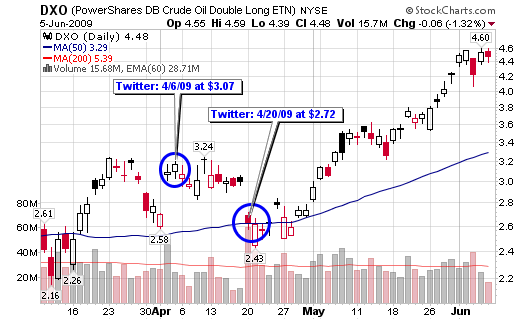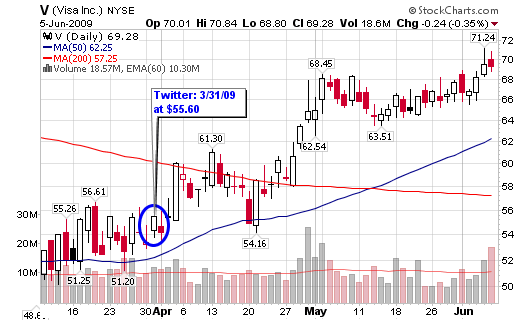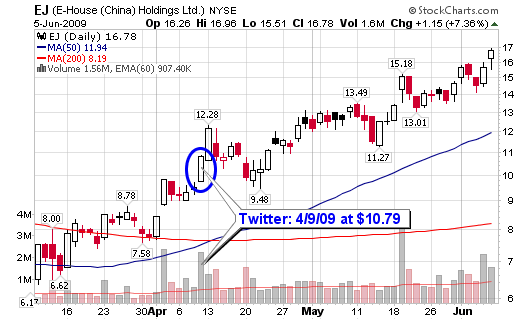I’ve been asked the following question (one way or another) numerous times:
“Why do you like Invensense so much?”
My answer: It’s an investment in the technology and I believe this is the company to take that technology to the next level. I always follow that response by emphasizing this: Do your own due diligence and NEVER make an investment based off of what I do.
I am not a short term trader but I do follow rules while making trades and one of the most important of these rules is: CUT LOSSES!
As several of my twitter followers have pointed out, I have violated that rule with INVN. That’s true, I didn’t cut the loss when is violated my mental stop. In fact, I dollar-cost averaged my original position. The follow-up purchases have taken my original position to a maximum position size. Now, I sit here writing this post stating that I DO NOT violate “position sizing” within my portfolio. That may be difficult to believe if I just violated another rule but as of today, I have not violated that one. My cost basis is higher than Friday’s closing price for INVN and it took a lot of strength not to buy another block of shares when it dropped below $10 (as low as $9.06 to be exact).
Think about it, a purchase below $10 is showing a gain anywhere from 10%-20% in two weeks. I knew it was a fantastic level to enter and my cost basis would have dropped but I am maxed out – I CANNOT increase my risk against my overall portfolio. That’s how you GO BROKE (especially if you turn out to be wrong – and I may be wrong with Invensense).
That’s the beauty of trading and investing. Your ideas prove to be right or wrong based on making money or losing money. As of today, I show a loss in INVN. So why do I still hold on?
Two reasons
- The technology: INVN is a leading provider of MotionTracking™ devices for consumer electronics products such as smartphones, tablets, game controllers, smart TVs, and wearable sensors. I see a big future here and I’m betting that INVN is the leader or one of the leaders.
- The fundamentals (specifically: sales and earnings growth)
I am a technically based trader on a longer term time-frame but for now, I am not trading the chart. Although one may argue that the recent price action suggests that support has been established – it’s still debatable based on the number of shares sold short. The IPO lock-up period has passed, the lawsuit is open knowledge, supplier product shortages have been discussed and the market has not performed well so INVN has paid consequences. I’d like to believe that all of that BAD news is priced in.
The pending lawsuit from their main competitor, STMicroelectronics, does keep me a bit worried on the fringes but I have no control there, other than to sell (that can screw up everything, regardless of fundamentals and technicals).
Let’s take a look at the numbers:
Earnings (YoY):
2008: -0.09
2009: 0.01
2010: 0.19
2011: 0.13
2012: 0.47
2013: 0.61 estimated +30%
2014: 0.85 estimated +39%
Earnings (QoQ):
June 30, 2011: 0.11 vs. -0.01
September 30, 2011: 0.15 vs. 0.04 | +275%
December 31, 2011: 0.13 vs. 0.06 | +117%
March 31, 2012: 0.07 vs. 0.03 | +133%
INCOME STATEMENT | FY2012 (April 1, 2012) vs. FY2011 (April 1, 2011)
| Current Period | Prior Period | % Change | |
|---|---|---|---|
| 4/1/2012 | 4/1/2011 | ||
| Sales (Income) | $152,967,000 | $96,547,000 | 58% |
| Cost of Sales | $67,246,000 | $43,386,000 | 55% |
| Gross Profit | $85,721,000 | $53,161,000 | 61% |
| Gross Profit Margin | 56.04% | 55.06% | 2% |
| Net Operating Income | $47,014,000 | $21,478,000 | 119% |
| Net Operating Income Margin | 30.73% | 22.25% | 38% |
| Income Available to Common | $16,329,000 | $1,631,000 | 901% |
BALANCE SHEET | FY2012 (April 1, 2012) vs. FY2011 (April 1, 2011)
| Current Period | Prior Period | % Change | |
|---|---|---|---|
| 4/1/2012 | 4/1/2011 | ||
| Cash | $157,772,000 | $38,075,000 | 314% |
| Accounts Receivable | $11,931,000 | $10,678,000 | 12% |
| Inventory | $12,240,000 | $15,208,000 | -20% |
| Total Current Assets | $186,131,000 | $65,297,000 | 185% |
| Total Assets | $193,318,000 | $70,746,000 | 173% |
| Accounts Payable | $13,172,000 | $10,786,000 | 22% |
| Total Current Liabilities | $13,200,000 | $11,012,000 | 20% |
| Total Liabilities (Total Debt) | $16,441,000 | $11,605,000 | 42% |
| Total Equity | $176,877,000 | $59,141,000 | 199% |
INSTITUTIONAL ACTIVITY (as of May 28, 2012):
| Institution Type | |||
|---|---|---|---|
| 13F (Money Market) | Mutual Fund | Other | |
| Number of institutions | 100 | 101 | 7 |
| Number of new positions | 47 | 61 | 5 |
| Number of positions sold out | 11 | 4 | 1 |
| Shares held | 15,879,598 | 8,357,405 | 118,315 |
| Shares held previous period | 11,958,005 | 1,790,387 | 62,656 |
| Shares bought | 9,209,721 | 6,724,972 | 84,315 |
| Shares sold | 5,288,128 | 157,954 | 28,656 |
| Value of shares held | $159,431,164 | $83,908,346 | $1,187,883 |
| Value of shares bought | $92,465,599 | $67,518,719 | $846,523 |
| Value of shares sold | $53,092,805 | $1,585,858 | $287,706 |
Two things stick out:
1. The increasing number of institutional investors (including large quantities of shares bought)
2. Increasing earnings, year-over-year and quarter-over-quarter.
Time will tell and my account balance will let me know if I am right or wrong. As for now, I am long $INVN – betting on the technology, industry growth, earnings growth and sales growth. In addition, I would like those institutional investors to continue buying!









Connect with Me